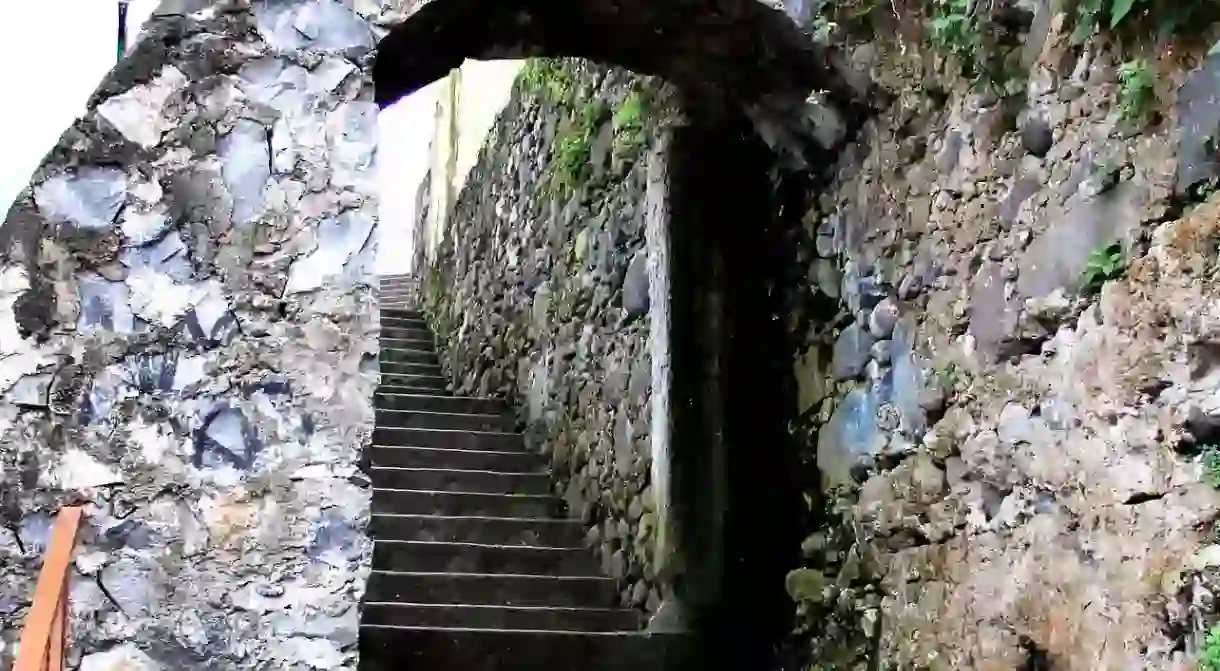The 6 “Magic Villages” of Veracruz, Mexico You Need to Visit

Veracruz, a state with a wide diversity of attractions, has rural towns called “Magic Villages,” which are places of natural beauty and attributes that immerse tourists in its history and culture. Check the following list and discover the delightful gastronomy, fabulous eco-touristic spots and other characteristics that make these villages so special.
Coatepec
Known as the Coffee Capital in Mexico, Coatepec is synonymous with delicious coffee, colonial architecture, walking trails, stunning hills, crystal-clear waterfalls, and about 370 historic buildings that earned it the title of National Historical Heritage. Visit its historic buildings and churches, and the interactive coffee museum El Cafetal. Don’t miss the natural attractions, which include the waterfalls Granada and Bola de Oro. As a Magic Village, Coatepec has charming local parties, like Fiestas Patronales de San Jerónimo, and the Coffee Fair. What else can you do? Landscape photography, coffee and liquor tasting, and amazing ecological and meditation trekking, and visits to coffee farms where you can buy treats such as coffee covered with chocolate.

Coscomatepec
This Magic Village is surrounded by hills and the Pico de Orizaba volcano, with dazzling landscapes to do thrilling eco-touristic activities, such as rappel in the Tecoac viewpoint, mountain bike riding in the hills near or through the Magic Route (from Maquili to Coscomatepec), and canoeing in the Jamapa river. Indulge in the culinary heritage, and the historic representations of the traditional dances in downtown. Visit the historical monuments and take amazing photos; you can’t miss the architecture of its churches and chapels, the archaeology museum and the Tres Arcos Bridge—here you can find the access route to the top of the Pico de Orizaba volcano.

Orizaba
Translating as “place of joyful water” in the native Nahuatl language, Orizaba is located in the high mountains region of Veracruz. Due to its height, the weather is always nice and fresh. Sightseeing is enjoyable, as it’s possible to appreciate the history and beautiful architecture. Orizaba has spots of important historic significance, such as the battle between Mexican and French armies in the Borrego Hill. The art is painted on the walls of its buildings—take a look at the Neoclassic style of the city hall and the mural “Social Revolution,” painted in 1926 by Clemente Orozco, a remarkable Mexican artist who reflected the tragedies he saw himself during the Mexican Revolution in the Cathedral church. Visit the State Art Museum to admire artwork of outstanding painters like Diego Rivera (Frida Kahlo’s once-husband), and if you like historic monuments, Orizaba has 113 of them. If you like adventure, don’t miss climbing the Pico de Orizaba volcano, an amazing natural wonder standing more than 18,300 feet (5,600m) tall, and the highest in Mexico.

Papantla
Rich in culture and nature, Papantla is the town of the Totonaca culture, Papantla’s Flyers and of the archaeological site El Tajin. This magic village was founded by the indigenous people, under the name Papantla, which in their language—Nahuatl—means “place of very noisy birds.” If you’re interested in taking pictures of the architecture, shoot the gothic style of the Cristo Rey Church, the Cathedral de la Señora de la Asunción and the Neoclassic style of the city hall. Visit the Israel C. Téllez park on weekends and observe the social dynamic of the locals, who like to spend time with family and friends. This park and garden has the traditional Danzon dance nights on Fridays, musical events on Saturdays, and cultural activities on Sundays, where you’ll be able to view local art.

Xico
History, gastronomy, culture and nature—all of this you can find in the picturesque village, which once was the land of Totonacas until the 16th century, when the Spanish founded Xico. Enjoy the breathtaking views of the mountain landscapes and the Texolo and Las Monjas waterfalls, walking, climbing, and even camping in these places fills you with a special peace and joy. Enjoy eating local dishes in a cozy restaurant in the afternoon, the fresh (never too cold) breeze gives a romantic touch. Try their special mole, prepared with chocolate, banana and apple, the classic chileatole, or the delicious beans soup with xonequi. Visit the Santa María Magdalena church to observe how the baroque and Neoclassical influence blends in the Mexican architecture.

Zozocolco
Mexico is a diverse country—every single little corner is different, and in Zozocolco you’ll be able to see a different perspective. Get to know another face of Mexico in a small village, where you’ll see the Catholic religious influences brought by the Spaniards. Its festivities are religious, such as Fiesta Patronal de San Miguel and Fiesta de la Purísima Concepción, festivals of regional music, with colorful dances that include guaguas´ (an agricultural ritual) and negritos. If you like music, here you’ll find a unique style: Huapango music. Walk through the narrow streets of downtown, enjoy the local gastronomy, and when it’s time, join the eco-touristic activities, swim in the pozas (natural pools) and streams, pay attention to the exotic fauna you’ve probably never seen before: peculiar insects, skunks, quails, chachalacas, and reptiles. Check the local crafts: 150 families are dedicated to wooden handicrafts and ornamental objects, so you might want to buy a souvenir.














